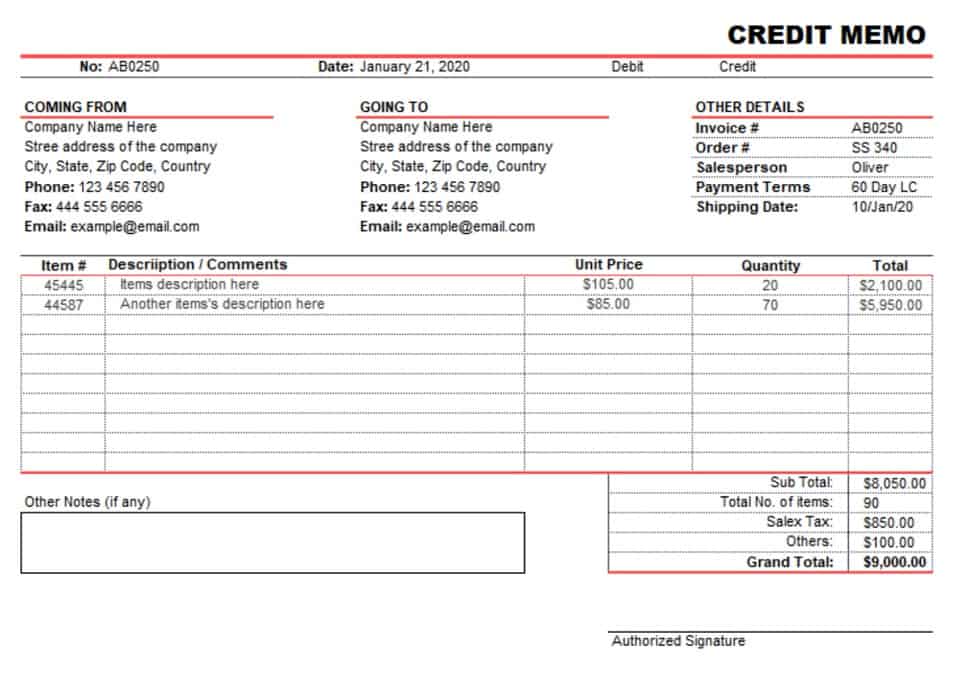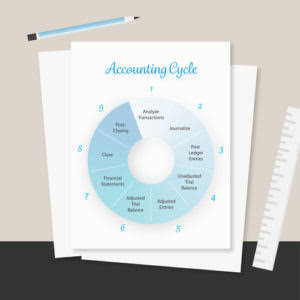Openload + Uptobox + Usercloud - Full Disclosure Principle of Accounting Definition, Explanation, Examples
Due to SEC regulations, annual reports to stockholders contain certified financial statements, including a two-year audited balance sheet and a three-year audited statement of income and cash flows. Accounting standards in every country are like traffic rules which everyone must abide by. The accounting standards make it compulsory to disclose the standards followed by an organization in the current year and past years. Also, any change in method or accounting policies from last year should be disclosed with the reason specified for the change.
- This can include transactions that have already occurred as well as future events contingent on third parties.
- Our writing and editorial staff are a team of experts holding advanced financial designations and have written for most major financial media publications.
- However, Trump’s latest tirade almost certainly has less to do with principle than political opportunity.
- The purpose of full disclosure is to provide users of financial statements with a complete and accurate understanding of an entity’s financial performance and position.
Ensures Compliance with Regulatory Standards
- The purpose of full disclosure in financial reporting is to provide all relevant and material information to the users of financial statements.
- It makes it difficult for management to hide adverse information or risky business practices that could affect the company’s future performance.
- Without this principle, it would be highly likely that companies would withhold information that could possibly put the company’s financial position in a negative light.
- Stakeholders like suppliers, customers, lenders, potential investors, etc. also use these financial statements to feed their individual information needs.
Let’s consider that X Ltd. has revenue of $5 Million and above in the last three years, and they have been paying late fees and penalties to the tune of $20,000 every year due to delays in filing annual return. If this $20,000 club has taxation fees, then not many people will know that this is not a tax expense but late fees and penalties. Simultaneously, if shown separately, an investor might question the organization’s intent to file annual returns as there is a delay consistently in all three years. So as per the full disclosure principle, this $20,000 should be shown under late fees and penalties, clearly explaining the nature, which should be easily understandable to any person. It’s not just Harvard that’s facing the heat — although as the nation’s most prestigious and high-profile university, its decisions will set the tone for the rest of the sector. More than 40 universities across the US are under investigation by the Trump administration, including for alleged illicit actions by DEI offices and charges of tolerating anti-semitism.
While there are some disadvantages, such as the potential for competitive harm, the benefits of transparency and informed decision-making far outweigh these concerns. Adhering to the full disclosure principle not only helps companies comply with accounting standards but also fosters trust and credibility with investors, creditors, and other stakeholders. Overall, the purpose of full disclosure is to provide users of financial statements with the information they need to make informed decisions about an entity’s financial position, performance, and prospects. Footnotes in financial statements provide additional information about accounting policies, liabilities, risks, and other relevant factors that cannot be fully detailed within the main financial statements.
In such a case, management probably doesn’t want outsiders, especially investors, to know the real situation of an entity. Before being elected, Vice-President J.D. Vance announced that “the professors are the enemy”. Marc Lampkin, a longtime Republican strategist, said that “Republicans believe that … universities are the training ground for left, progressive camps”. Shaun Conrad is a Certified Public Accountant and CPA exam expert with a passion for teaching.
Our writing and editorial staff are a team of experts holding advanced financial designations and have written for most major financial media publications. Our work has been directly cited by organizations including MarketWatch, Bloomberg, Axios, TechCrunch, Forbes, NerdWallet, GreenBiz, Reuters, and many others. We follow ethical journalism practices, which includes presenting unbiased information and citing reliable, attributed resources. Much of our research comes from leading organizations in the climate space, such as Project Drawdown and the International Energy Agency (IEA).
Full disclosure also refers to the general need in business transactions for both parties to tell the whole truth about any material issue about the transaction. For example, in real estate transactions, there is typically a disclosure form signed by the seller that may result in legal penalties if it is later discovered that the seller knowingly lied about or concealed significant facts. Investors and creditors should know if the company is facing a $2M lawsuit that it will probably lose in the next year. Go a level deeper with us and investigate the potential impacts of climate change on investments like your retirement account. Company conference calls can, and often are, be recorded to be used to provide more clarity on the annual reports.
Supplemental information, on the other hand, is extra information that companies may want to show potential investors. For instance, management might include its own analysis of the financial statements and the company’s financial position in the supplemental information. The material information needs to be disclosed in the regulatory filings (SEC filings) that a company submits. These filings include the company’s quarterly and annual statements, audited financial statements, footnotes, and schedules, as well as management discussion and analysis in which they provide descriptive guidance.
What Is Full Disclosure Principle?
After almost a decade of experience in public accounting, he created MyAccountingCourse.com to help people learn accounting & finance, pass the CPA exam, and start their career. The nature of relationship between the business and related party/parties of the organisation. Our goal is to deliver the most understandable and comprehensive explanations of climate and finance topics.
The full disclosure principle is critical for maintaining transparency and honesty in financial reporting. It ensures that all material information is available to stakeholders, enabling them to make informed decisions. This principle is particularly important for investors and creditors, who rely on accurate financial information to assess a company’s financial position and performance. The Full Disclosure Principle in what is full disclosure principle accounting refers to the practice of providing complete and transparent information about a company’s financial status, beyond what is visible in the financial statements. This means that companies must disclose all relevant facts, such as contingent liabilities, risks, and any events that could influence the financial statements, whether positive or negative.
Companies that adhere to this principle not only comply with regulatory requirements but also build a strong reputation for integrity and accountability in the market. The purpose of full disclosure in financial reporting is to provide all relevant and material information to the users of financial statements. Full disclosure is essential for ensuring transparency and accuracy in financial reporting, which in turn promotes confidence in financial markets and facilitates informed decision-making by investors, creditors, and other stakeholders. The full disclosure principle of accounting is related to the materiality concept of accounting and talks about the information disclosure requirements for the users of the financial statements of an entity. Such information is made available to stockholders and other users either on the face of financial statements or in the notes to the financial statements. The Full Disclosure Principle is applied through a variety of practices and requirements in financial reporting.
Full Disclosure Principle in Modern Accounting Practices
Another significant aspect is the inclusion of accounting policies and methods used in preparing the financial statements. Different companies might use varying methods for inventory valuation, depreciation, or revenue recognition. By disclosing these methods, companies provide a clearer picture of how their financial results were derived, allowing for better comparability and analysis.
What is Full Disclosure Principle?
The Full Disclosure Principle is a cornerstone of financial reporting, requiring that all relevant and material information be disclosed in a company’s financial statements. This principle ensures transparency and accountability, allowing investors, regulators, and other stakeholders to make informed decisions. Whether it’s regarding liabilities, risks, or transactions with related parties, this principle mandates the inclusion of all significant information that might affect the understanding of a company’s financial position. By adhering to the Full Disclosure Principle, companies uphold ethical standards and enhance trust with their stakeholders. The full disclosure principle is a cornerstone of accounting that ensures transparency in financial reporting. It requires businesses to disclose all relevant financial information in their financial statements.
Understanding its significance helps us appreciate the evolving landscape of financial accountability.
The Full Disclosure Principle is applied through footnotes, supplementary schedules, management discussion and analysis, and auditor’s reports, all of which provide additional context and details about a company’s financial position. One of the primary benefits of the Full Disclosure Principle is that it ensures transparency. It requires companies to reveal all material information that might influence the decisions of investors, creditors, and other stakeholders. This transparency fosters trust and confidence in the financial markets and prevents the concealment of critical details that could mislead stakeholders.
Some limitations include information overload, the high cost of compliance, potential breaches of confidentiality, and the subjectivity in determining what constitutes “material” information. For the past 52 years, Harold Averkamp (CPA, MBA) hasworked as an accounting supervisor, manager, consultant, university instructor, and innovator in teaching accounting online. For the past 52 years, Harold Averkamp (CPA, MBA) has worked as an accounting supervisor, manager, consultant, university instructor, and innovator in teaching accounting online.
One of the most notable impacts is on the balance sheet, where full disclosure can reveal off-balance-sheet items that might otherwise go unnoticed. For example, lease obligations, which can be substantial, are often disclosed in the notes rather than on the face of the balance sheet. This practice ensures that stakeholders are aware of all financial commitments, even those not immediately apparent from the primary financial statements. These notes offer detailed explanations and additional context that the main financial statements might not fully convey.
Openload + Uptobox + Usercloud - Imprest System What Is It, Examples, Advantages
This amount is used to cover minor expenses and is replenished periodically. The petty cash imprest system of petty cash fund is usually overseen by an employee or department head who ensures that all disbursements are properly recorded and receipts are obtained for each transaction. ABC Ltd will take the money from the petty cash fund, kept aside for this purpose. After the expenses are done, the company will transfer equal amount of money from its bank account to the petty cash book.
Example of the Imprest Petty Cash System
#1 – Efficiency- It ensures there is efficiency in the fund disbursement even though there is no requirement for higher approvals. Such expenses include any purchase of stationery or small office supplies, travelling and entertainment related expense, any repair work, etc. These are such that the amount is very small but required for daily and smooth working of the organization. In addition to funds used by a business, an imprest may also refer to money paid to someone for doing work on behalf of a government.
For instance, purchasing office supplies like staples, reimbursing employees, or covering minor travel costs, such as taxi rides or tolls, can be managed through petty cash. In order to set up an imprest account, a business must first allocate a fixed amount of funds, which is recorded in the company’s ledger. Any disbursement made from the account requires proper documentation, such as receipts, to justify the expenditure. The balance of the fund is then replenished once the outgoing cash has been accounted for and documented. This process helps maintain a consistent balance within the imprest account, making it easier to monitor expenses and detect any potential discrepancies or instances of fraud. A petty cash book is a record that tracks all transactions made from the petty cash fund.
Types of Petty Cash Systems
It helps businesses organise minor expenses, maintain transparency, and ensure accountability. An imprest account holds “imprest,” or funds set aside for the purpose of paying for small transactions, reimbursements, and incidental purchases. A standing imprest account maintains a fixed balance replenished after a certain amount of expenses are paid or at pre-determined intervals based on a sufficient pattern of spending.
How to Reconcile Your Imprest Petty Cash Fund
While an imprest system offers a high level of control, it’s arguably inefficient when you consider the amount of paperwork involved relative to transaction size. Not to mention, the imprest system is only as good as the financial custodian overseeing it. If there are mistakes in recording disbursements, the system quickly falls apart. In fact, when cash disappears from a business—whether because of mismanagement, employee theft, or overspending—the imprest account is often where the investigation into this occurrence begins. Imprests have several advantages over other payment methods, such as improved expense tracking and enhanced security.
Not setting the expenditure limits for every nominal transaction can even put an organization at the risk of overspending on purchases. Similar to every financial concept or process, his system also comes with its own set of pros and cons. The word is derived from the early Italian or medieval Latin imprestare, which meant to lend. Thus, an imprest now means a small advance of funds used for incidentals, and which must be replenished after use.
- Accurate record-keeping is crucial for tracking petty cash and ensuring it’s used responsibly.
- This person is responsible for overseeing and managing the petty cash fund, ensuring that all transactions are authorized, recorded accurately, and supported with necessary documentation.
- Documenting your Imprest account with receipts helps you to monitor how much money is being spent on incidental expenses, while also keeping you protected from employee fraud.
Step 3: Securing the Petty Cash Fund
The fund is carefully calculated based on historical data, considering the average amount required for these expenses over a given period. Despite its many advantages, the imprest system can also have many disadvantages. An imprest system of petty cash can also help regulate small expenses and reduce administrative burdens. It allows for better reconciliation of petty cash balances while also keeping the system quick and simple. The imprest system is an accounting system that companies use to manage petty cash.
- Imprest, in its most common usage, is referred to as the petty cash system.
- In most cases, Imprest systems are used to account for petty cash (a small amount of money used for expenditure on smaller items, i.e. office supplies, catered lunch, cards for customers, etc.).
- The fixed petty cash system means there’s a fixed period to spend the money over, and then the fund is always given back the same amount, even if the full amount wasn’t spent.
- This enables them to focus on their core responsibilities, saving time and boosting overall operational efficiency within the organisation.
- This system is particularly useful for larger organisations or those that require a deeper analysis of petty cash expenses.
Once granted, the agency is required to submit a detailed operational plan outlining how the funds will be used. Petty expenses are managed with the set limits of the imprest system, making it almost impossible for the petty cashier to spend more than the petty cash available in the account. The Imprest system eliminates the possibilities of unauthorized spending as the funds are designated for pre-determined purposes. This, in return, makes tracking of expenses and reporting of discrepancies much easier which ultimately aids in the detection and elimination of the possibilities of fraud. Imprests may also be used to cover employee payroll, dividends, employee travel, and bonuses. After these outgoing expenses are paid, the fund is typically reimbursed by capital from the company’s primary bank account.
Despite its limitations, an imprest account remains a valuable tool for businesses looking to efficiently manage small expenses and maintain a degree of control over their cash flow. By understanding both the advantages and disadvantages of this system, organizations can make informed decisions about whether it’s the right choice for their business needs. Companies keep cash on hand in imprest to pay for incidentals like office supplies, small reimbursements, or other minor expenses.
A proper cash management system can help companies survive in the long run. These may include various procedures that can be a part of a company’s cash management system. Best for businesses of all sizes looking for a simple, controlled way to manage minor expenses. Establish clear policies regarding the types of expenses that can be paid from petty cash and the documentation required for reimbursement. So, the next time you need to log a fancy £9.99 supermarket trifle for the next office birthday, digital petty cash management will turn that trifle into a piece of cake.
What is an imprest system of petty cash?
Smart company cards make spending easier to control, especially when spending limits can be set and adjusted accordingly. A lean and efficient way to manage your small expenses, this system can transform your cash budgeting from static to dynamic. Many of us think there’s no point dealing in wads of notes or the jingling coins in your pocket because vendors simply won’t accept cash. But even after 2020 (the year that cash was supposedly wiped out for good), cash payments actually rose by 400 million in 2022.
The key feature of the Imprest system is the fact that all expenditures must be documented. This gives you a greater degree of control over cash disbursements made by your company. Moreover, the physical nature of petty cash, which is the most common type of imprest system, presents additional challenges. With petty cash, companies must manage and secure a stash of actual currency on site. This can increase the risk of theft or loss, and it may require additional resources for security measures. Additionally, if the cash is not handled properly or mismanaged, it could lead to discrepancies between recorded expenses and actual funds available in the imprest account.
This system helps monitor expenses, flag discrepancies, and ultimately detect fraud. The imprest system is a time-tested approach to managing petty cash that controls small and routine expenses within organizations. Because it is simple, accountable, and efficient, it can also be applied to businesses at any level. An imprest account refers to a petty cash fund that a business maintains to cover smaller transactions, such as office supplies, employee reimbursements, or other minor expenses. The term “imprest” derives from the Latin word imprestari, which means ‘to lend.’ Imprests function through regular replenishments of cash in order to maintain a fixed balance.
Openload + Uptobox + Usercloud - Guest Post Part 1 of 4 How Proactive, T-Shaped Account Leaders Drive Revenue Growth 4As

It depicts credits graphically on https://www.bookstime.com/articles/vertical-analysis the right side and debits on the left side. Each example of the T-account states the topic, the relevant reasons, and additional comments as needed. For asset accounts, which include cash, accounts receivable, inventory, PP&E, and others, the left side of the T Account (debit side) is always an increase to the account.
- Even with the disadvantages listed above, a double entry system of accounting is necessary for most businesses.
- Many accounting software solutions offer sophisticated features for automating bookkeeping processes, generating financial reports, and facilitating real-time analysis.
- T accounts serve as the basis for preparing financial statements by providing a detailed record of transactions for each account.
- While a journal entry is a record of a single transaction in chronological order, showing the debits and credits of each account affected.
- A useful tool for demonstrating certain transactions and events is the T-account.
- On account is saying that the supplies will be paid for later and that is why we increase accounts payable with a liability.
Journal Entry

This system ensures that the books balance, with every action having an equal and opposite reaction, so to speak. When you debit an account, you either increase an asset or expense or decrease a liability, revenue, or equity. T-accounts are used to track t accounts individual account balances and transactions, while trial balance summaries are used to ensure the overall accuracy of a company’s financial records.
Common T-Account Questions
A T-Account is a visual presentation of the journal entries recorded in a general ledger account. This T format graphically depicts the debits on the left side of the T and the credits on the right side. This system allows accountants and bookkeepers to easily track account balances and spot errors in journal entries. A T-account is used to track specific transactions, while the balance sheet is a summary of a company’s overall financial position. Both statements are important tools in accounting and finance, and they are used to help stakeholders understand a company’s financial health.

Why Can’t Single Entry Systems Use T Accounts?
- This is the income your business earns from selling goods or services.
- Businesses often require customized reports tailored to specific stakeholder needs, regulatory requirements, or industry standards.
- After almost a decade of experience in public accounting, he created MyAccountingCourse.com to help people learn accounting & finance, pass the CPA exam, and start their career.
- Debits represent increases in assets and expenses, and decreases in liabilities and equity.
- Under IFRS, liabilities are classified as current or non-current based on the settlement timeline, affecting their presentation in financial statements.
- Operating costs are a type of expense so it is debited by £2000.
T-accounts cannot perform sophisticated financial analysis techniques, such as ratio analysis, variance analysis, or scenario modeling. Without such analytical tools, businesses may struggle to effectively assess profitability, liquidity, and solvency. Consider a multinational corporation with diverse revenue streams and complex financial instruments. T-accounts alone may obscure vital details, such as foreign exchange gains or losses, derivatives, and intercompany transactions.
The general ledger is divided up into individual accounts which categorise similar transaction types together. Every financial transaction is first recorded as a journal entry, into the general journal. So, the general journal is the original book of entries that contains the raw financial data of a business. Since services are sold on credit, the accounts receivable account increases and gets debited for $600. Revenue also increases, so the Repair Service Revenue account gets credited for $600.

Liabilities

The second transaction will credit the accounts payable T account for $50 and debit the supplies account for $50. On account is saying that the supplies will be paid for later and that is why we increase accounts payable with a liability. When learning the accounting process, from debits and credits to double-entry, it’s easy to get lost in CARES Act the process and miss the big picture. I’ve agreed to pay for the coffee machine next month so my accounts payable is increased (credited) by £700.
Openload + Uptobox + Usercloud - 2025 Nonprofit Audits State Specific Audit Requirements
Compliance ensures that nonprofits continue to operate within legal boundaries, avoiding penalties and preserving public trust. An independent audit reviews financial statements, including your nonprofit’s statement of financial position, related statement of activities, cash flows and notes to the financial statements. An auditor can examine profit/loss https://greatercollinwood.org/main-benefits-of-accounting-services-for-nonprofit-organizations/ segments so they can easily track expenses back to each donation or grant.
- Once again, be as cooperative as possible and set aside time to work with your firm and get them all the documents they need.
- Contact us today to start preparing for your upcoming audit and getting your financial records in line.
- Fortunately, YPTC is willing and ready to help you prepare for your nonprofit audit and lend our financial expertise to your team.
- And some nonprofit grants require a satisfactory audit before your nonprofit can receive funding.
- In brief, the IRS wants to confirm that the foundation, charity, or other nonprofit concern is following the prescribed rules of reporting and fulfilling the purpose upon which its tax exemption is based.
- It’s less of a financial audit (though, it normally includes that to some extent) and more of a check on compliance requirements and adherence to established bylaws.
State Law Nonprofit Audit Requirements: 50-State Chart
Next, auditors develop a timeline and budget requirements for completing a compliant review. Lastly, auditors determine whether the nonprofit uses donor funds in accordance with their stated goals and objectives. Major donors, government agencies, and corporate partners frequently require audited financials to approve grants or renew an organization’s funding. Donors and board members rely on audit results to understand how effectively the organization is managed and whether resources are being used as intended.
Internal audit
- It accurately reflects transactions in compliance with generally accepted accounting principles (GAAP).
- Any discrepancies or inconsistencies should be addressed immediately to avoid complications during the audit.
- Once the auditor has finished, you’ll review their recommendations and implement them to improve your financial operations.
- In conclusion, the nonprofit audit process is a journey of collaboration, data-driven insights, and strategic implementation.
- The auditor will assess the accuracy of your financial statements, examine your internal controls, and evaluate your compliance with relevant regulations through both financial audits and compliance audits.
Nevertheless, nonprofits trying to manage costs should not be shy about asking whether the third party will accept a review in place of a full audit. The third party (usually a funder) may understand the goal of cost savings and accept a review instead. Our robust donation management software protects donor data and streamlines donation reporting and analytics to ensure accuracy and time-savings for everyone involved. Internal audits are better than nothing but don’t necessarily increase public transparency and accountability—since an internal team could be the root of the problem.
Reasons Why Nonprofits Need an Audit
This is a collective effort, as noted in reflections from a SOC 2 audit, which emphasizes the importance of having the entire organization on board for successful compliance. The Ford Foundation’s experience with updating their content management system illustrates the need for adaptability and readiness for scaling operations, a lesson that’s very much applicable to the auditing process. Lastly, preparing financial statements and records is not just about compliance but about telling the story of the nonprofit’s impact.
An organization’s revenue and donations are perhaps the most important aspects of running a nonprofit. Nonprofit executives must ensure that finance teams and internal systems are audit-ready well before auditors arrive. Once the auditor completes their work, they’ll compile their findings into a report and present it to your nonprofit. The first thing to know about this report is that if it isn’t clean, that is totally fine! What really matters isn’t how many recommendations the auditor made—it’s how promptly and thoroughly you act on them.
Not only does a well-organized audit process add weight to your standing with supporters, it’s also excellent practice for good financial management and ensuring regulatory compliance. Tracking and reporting systems must capture specific financial data related to each grant, such as expenditures against budgeted categories and timeframes. Federal grants in the United States, for example, may require adherence to the Uniform Guidance (2 CFR 200), which outlines administrative, cost, and audit requirements. Nonprofits must ensure their financial Top Benefits of Accounting Services for Nonprofit Organizations You Should Know systems can meet these reporting standards to maintain eligibility for funding. Assessing internal controls ensures the integrity of financial reporting, safeguards assets, and promotes operational efficiency. For nonprofits, these controls not only prevent fraud or errors but also ensure resources are used in alignment with their mission.
It can be mandated by legal requirements, grant agreements, or board policies and offers a comprehensive view of the organization’s financial health and integrity. Auditors scrutinize financial statements, verify transactions, and assess internal controls to identify potential areas for improvement. It’s important that nonprofits understand the different types of audits to fulfill their financial and regulatory responsibilities. Either way, retaining an independent auditor to perform a financial review of accounting records can only help your business. If you submit audited financial statements to donors and other sources, they will give your grant requests greater weight than those applications without such evidence of financial health.
Auditor Selection
- Reviewing your financial statements and procedures allows you to assess your financial management and improve your strategy going forward.
- If your nonprofit is not required to have an audit, you may still choose to have one conducted on a voluntary basis.
- A financial statement audit is a thorough review of your financial statements to determine if your financial statements present fairly, in all material respects, in accordance with generally accepted accounting principles.
- With differing state-specific rules layered on top of federal mandates, it’s easy to feel overwhelmed.
- Kelly has expertise in audit, review, and compilation services across diverse industries, including nonprofit organizations, construction, manufacturing, and technology.
As a nonprofit, your relationship with donors and government entities is vital, and has to be built on trust. These components collectively contribute to a robust audit process, fostering trust among stakeholders in the non-profit sector. Your organization’s development team assigns an audit committee to perform internal audits.
Compiling reports
Although centralized, the system can be configured to facilitate access to external auditors so they can run the nonprofit audit remotely. Your system must feature a robust audit trail to track all changes and activities, ensuring transparency and accountability throughout the many tasks, documents, and workflows in the system. Check your state’s nonprofit audit requirements to determine if you fall into this category. Not all nonprofits are required to undergo an audit, but there are specific circumstances when it may be necessary.
Openload + Uptobox + Usercloud - What are Reserves?

As mentioned above, companies accumulate their profits or losses for several periods under this balance. However, they must deduct any dividends paid to shareholders from those amounts. The formula for retained earnings is straightforward, as stated below. Retained earnings are reported in the shareholders’ equity section of the corporation’s balance sheet. Corporations with net accumulated losses may refer to negative shareholders’ equity as positive shareholders’ deficit. A report of the movements in retained earnings is presented along with other comprehensive income and changes in share capital in the statement of changes in equity.

Can a Shareholder Choose Between Cash and Stock Dividends?

In financial metrics, reinvested earnings can improve return on equity (ROE), reflecting management’s ability to generate profits from shareholders’ investments. A consistently high ROE can attract more investors, further driving up stock prices and shareholder value. For shareholders, reinvested earnings mean they do not receive dividends, thus avoiding immediate tax liability on dividend income. This deferral benefits those in higher tax brackets, as they can delay personal income tax until realizing capital gains upon selling their shares. Capital gains are often taxed at a lower rate than ordinary income, making reinvested earnings particularly appealing.
- The profit is also understated, it is the same as the retained earnings.
- Retained earnings, on the other hand, are the profits a company has reinvested into the business.
- Retained earnings play a crucial role in the financial health and stability of a company.
- In accounting, the company usually makes the journal entry for retained earnings when it makes the closing entry after transferring net income or net loss to the income summary account.
- The accounting equation is a fundamental concept in accounting that helps us understand the relationship between a company’s assets, liabilities, and capital.
Why Does Company Need to Distribute Dividend?
Equity finance consists of finance that companies raise through their shareholders. In exchange for the finance they provide, shareholders receive the shares of the company. The shares of a company give its shareholders the ownership of the company for the proportion of shares they hold.
- It is calculated either as a firm’s total assets less its total liabilities or alternatively as the sum of share capital and retained earnings less treasury shares.
- Part of the ROE ratio is the stockholders’ equity, which is the total amount of a company’s total assets and liabilities that appear on its balance sheet.
- Besides his extensive derivative trading expertise, Adam is an expert in economics and behavioral finance.
- In this step, the company does not pay out dividends to its shareholders.
- Deferred tax liabilities are increases in taxes payable in future years because of temporary taxable differences.
- The par value of a stock is the minimum value of each share as determined by the company at issuance.
Are Retained Earnings Current Liabilities or Assets?
For shareholders to be eligible for payment at the time the company pays dividends, they must hold the shares of the company before the ex-dividend date. To summarize, there are various strategies that businesses can implement to minimize the tax impact on their retained earnings. These strategies include investing in tax-advantaged accounts, taking advantage of tax credits and deductions, and restructuring operations to take advantage of more favorable tax rates. By implementing these strategies, businesses can potentially reduce their tax liability and keep more of their retained earnings for future investments and growth.
- The ownership in a company can give them different rights, one of which includes the right to receive dividends and the right to the assets of the company, if it goes into liquidation.
- Typically, financial statements include a statement of retained earnings that sums up how this account has changed in the current period.
- There may be several financial assets that may not be permitted to put off the balance sheet.
- Capital stock represents the amount of money invested in a company by its shareholders.
Social Capital (venture capital) Exits and Investment Trends

Another important aspect of retained earnings is the tax implications that can arise from this balance sheet item. Retained earnings is retained earning a liability have significant implications for both shareholders and tax considerations. They reflect a company’s profitability, growth potential, and financial decision-making. By understanding the various aspects and implications of retained earnings, companies can make informed financial decisions that align with their long-term objectives. From the perspective of shareholders, retained earnings reflect the company’s ability to generate profits and reinvest them for future growth. A higher level of retained earnings suggests that the company is retaining a larger portion of its profits, which can be seen as a positive sign of financial strength.
This accumulation of earnings over time can significantly impact a company’s tax liability and financial decision-making. unearned revenue Reinvested earnings play a significant role in corporate finance, affecting a company’s growth and financial health. These profits are retained and reinvested into the business instead of being distributed as dividends. This decision can influence tax liabilities and shape shareholder value. Prior period adjustment is made when there is an error in prior period financial statements or the company changes the accounting standard or policy that requires the retrospective adjustment. In accounting, the company usually makes the journal entry for retained earnings when it makes the closing entry after transferring net income or net loss to the income summary account.
- Equity finance consists of finance that companies raise through their shareholders.
- Retained earnings are profits that a company has earned and chooses to reinvest back into the business.
- Your current retained earnings are the amount calculated during your last financial period.
- This allows your business to start recording income statement transactions again for each period.
- Retained earnings represent a company’s accumulated profits or losses.
- Similarly, it denotes the shareholders’ rights to a company’s assets after liquidation.
The Importance of the Statement

Additionally, investors may prefer to see larger dividends rather than significant annual increases to retained earnings. Revenue is the money generated by a company during a period but before operating expenses and overhead Cash Flow Management for Small Businesses costs are deducted. In some industries, revenue is called gross sales because the gross figure is calculated before any deductions. Usually, these include special dividends that differ from the year-end allotments. The rest of the formula for retained earnings stays similar in this version.
Openload + Uptobox + Usercloud - Handbook: Equity method of accounting
The equity method of accounting offers a fair way for investor companies to account for their financial stake in companies they significantly influence but do not outright control. This accounting approach better reflects the true economic nature of the investment relationship as it attributes a proportional slice of the investee’s profits and losses to the investor company, unlike basic cost accounting methods. The investor determines that it should account for this investment under the equity method of accounting. The initial measurement reflects that there are basis differences of $300 in this transaction, consisting of $100 unrecorded intangible assets (customer relationship) and $200 goodwill. Many equity investments do not require the complete acquisition of investees and their consolidations. Depending on circumstances, companies may account for an equity investment as consolidation, equity method, or fair value method.
Adjustments to Other Comprehensive Income
CPAs who have had exposure to equity method accounting will hopefully find that the above discussion comports with their thoughts and presumptions. Those less familiar with the topic may benefit from the concise and brief examples above that can explain this complicated area of accounting. Under equity accounting, the biggest consideration is the level of investor influence over the operating or financial decisions of the investee. When there’s a significant amount of money invested in a company by another company, the investor can exert influence over the financial and operating decisions, which ultimately impacts the financial results of the investee. Our objective with this publication is to help you make those critical judgments.
Impairment Considerations
The equity method of accounting is used to account for an organization’s investment in another entity (the investee). This method is only used when the investor has significant influence over the investee. Under this method, the investor recognizes its share of the profits and losses of the investee in the periods when these profits and losses are also reflected in the accounts of the investee. Any profit or loss recognized by the investing entity appears in http://www.stroy-z.ru/news/2009/01/26/news_210.html its income statement.
- Below is a break down of subject weightings in the FMVA® financial analyst program.
- If the fair value is less than the carrying amount, an impairment loss is recorded in the investor’s income statement.
- Indicators of impairment include significant financial difficulties faced by the investee, declining cash flows, or adverse market conditions.
- If the reporting company has a controlling interest (51% or greater) it is reported as a consolidated subsidiary.
- This content is for general information purposes only, and should not be used as a substitute for consultation with professional advisors.
Change from equity method to consolidation.
However, you never deal with those statements if you’re analyzing normal companies. Just like normal Shareholders’ Equity (also known as the Statement of Owner’s Equity), it increases when Net Income flows in and decreases when Dividends are paid. The Equity Investments line acts as a “mini-Shareholders’ Equity” for the minority stake. But if they represent smaller, private companies with no listed market value, you won’t be able to do much. So, the company is most likely classifying this investment as “Equity Securities,” which means that Realized and Unrealized Gains and Losses show up on the Income Statement.
Example of Using the Equity Method
For example, if an investor receives a $20,000 dividend, the investment’s carrying value decreases by that amount. Special dividends or non-cash distributions, such as stock dividends, may require additional analysis to determine their impact on the investment’s http://www.stroy-z.ru/profile/passwordrecovery/?curPos=550 carrying value. It is essential to evaluate these distributions carefully, considering both accounting standards and any relevant tax implications. For example, under IRC Section 301, certain distributions may have differing tax treatments based on their classification.
For smaller ownership stakes, the investment is reported according to the http://www.thailande.ru/blogs/smehoproject/test-po-pedagogike-v-magistraturu-36746.html fair value method. It is used when the investor holds significant influence over the investee but does not exercise full control over it, as in the relationship between a parent company and its subsidiary. Under the equity method, dividends are treated as a return on investment that reduces the value of the investor’s shares.
- The equity method is an accounting technique for reporting financials when one company invests in another.
- The equity method requires adjusting the carrying amount of the investment for the investor’s proportionate share of the investee’s profits or losses, which is recognized in the investor’s income statement.
- Zombie reports a net income of $100,000, which is reduced by the $50,000 dividend.
- Explore the essentials of equity method accounting, from initial recognition to handling dividends and impairment considerations.
When an investee declares a dividend, the investor reduces the carrying amount of their investment by the dividend amount. This approach reflects that dividends represent profits already recognized in the investor’s share of the investee’s earnings. FASB has issued guidance on dealing with equity method accounting for investments. This article expounds on the fundamental concepts of equity method accounting; its objective is to provide an accounting context and a general framework for equity method accounting. It has eschewed a detailed deliberation on tax accounting issues, but it has discussed certain tax accounting concepts that are an integral part of financial accounting. Therefore, the journal entries do not reflect deferred tax assets (DTA) or deferred tax liabilities (DTL).
In such a case, investments made by the parent company in the subsidiary are accounted for using the consolidation method. The equity method better reflects how an investor company can exert significant influence over an investee’s operations without needing controlling interest. Significant influence can emerge, for instance, when an investor gains board representation and participates in policymaking by conducting substantial inter-company transactions or when the investee becomes technologically dependent. Consider an example where an investor acquires 10% equity in a foreign investee for $1,000 and accounts for it under the fair value method.
Openload + Uptobox + Usercloud - Depreciation Tax Shield Formula + Calculator

As you can see from the above calculation, the Depreciation Tax Savings as the expense increases. There are a variety of deductions that can shield a company (or Individual) from paying Taxes. The Depreciation Tax Benefit reflects the money saved on Income Taxes due to Depreciation Expense. To wrap this up, we hope you now have a much Bookkeeping for Chiropractors better understanding of the Depreciation Tax Shield Calculation as well as the underlying concept. The Interest Payments are typically tax-deductible, which lowers the Company’s tax bill. As a cost of borrowing, the borrower must make Interest payments for the benefit of borrowing.
- As you can see from the above calculation, the Depreciation Tax Savings as the expense increases.
- When filing taxes, ensure you’re claiming these deductions to save money during tax season.
- This approach allows the taxpayer to recognize a larger amount of depreciation as taxable expense during the first few years of the life of a fixed asset, and less depreciation later in its life.
- Depreciation tax shield can dramatically impact the NPV of a proposed project, especially when the company’s tax rate is higher and the project involves the use of costly fixed assets.
- They can take different forms, such as deductible expenses, tax credits, or depreciation allowances.
Why Does the Depreciation Tax Shield Matter?
The term “Tax Shield” refers to the deduction allowed on the taxable income that eventually results in the reduction of taxes owed to the government. The formula for tax shields is very simple, and it is calculated by first adding the different tax-deductible expenses and then multiplying the result by the tax rate. Depreciation Tax Shield is the tax saved resulting from the deduction of depreciation expense from the taxable income and can be calculated by multiplying the tax rate with the depreciation expense. Companies using accelerated depreciation methods (higher depreciation in initial years) are able to save more taxes due to higher value of tax shield. They can take different forms, such as deductible expenses, tax credits, or depreciation allowances.

How Does the Depreciation Tax Shield Work?
This is done because every asset is subject to a fall in value during usage due to continuous wear and tear. The cost allocation in the form of depreciation will ultimately ensure that the final value of the asset appearing in the financial statement will reflect its true and fair current value. The impact of adding/removing a tax shield is significant enough that companies will take it into account when considering their optimal capital structure, which is their mix of debt and equity funding.
How Accelerated Depreciation Works On Tax Savings?
CFI is the global institution behind depreciation tax shield the financial modeling and valuation analyst FMVA® Designation. CFI is on a mission to enable anyone to be a great financial analyst and have a great career path. In order to help you advance your career, CFI has compiled many resources to assist you along the path. Get instant access to video lessons taught by experienced investment bankers.
Straight-Line vs Accelerated Depreciation – Valuation Impact
The net benefit of accelerated depreciation when we compare to the straight-line method is illustrated in the table below. Common expenses that are deductible include depreciation, amortization, mortgage payments, and interest expense. There are cases where income can be lowered for a certain year due to previously unclaimed tax losses from prior years. For Scenario A, the depreciation expense is set to be zero, whereas the annual depreciation is assumed to be $2 million under Scenario B. The real cash outflow stemming from capital expenditures has already occurred, however in U.S. Under U.S. GAAP, depreciation reduces the book value of a company’s property, plant, and equipment (PP&E) over its estimated useful life.


A depreciation tax shield is a tax reduction technique under which depreciation expense is subtracted from taxable income. The amount by which depreciation shields the taxpayer from income taxes is the applicable tax rate, multiplied by the amount of depreciation. This tax shield can cause a substantial reduction in the amount of taxable income, so many organizations prefer to use accelerated depreciation to accelerate its effect. Accelerated deprecation charges the bulk of an asset’s cost to expense during the first half of its useful life. The Depreciation Tax Shield Calculator helps businesses and individuals estimate the tax savings resulting from asset depreciation. The tax shield is a valuable financial tool that reduces taxable income, allowing companies to save money on taxes while maintaining assets for long-term operations.
- For example, because interest payments on certain debts are a tax-deductible expense, taking on qualifying debts can act as tax shields.
- Depreciation tax shield is the reduction in tax liability that results from admissibility of depreciation expense as a deduction under tax laws.
- So, conclusively, we can say that the concept is more practical and effective when the annual depreciation expense and tax rates are higher.
- In this post, we’ll dive into a concept that is essential for understanding tax planning and its impact on businesses and individuals alike – the tax shield.
- This a tax reduction technique under which depreciation expenses are subtracted from taxable income.is is a noncash item, but we get a deduction from our taxable income.
Depreciation Tax Shield Formula
- The booked Depreciation Tax shield is under the Straight Line method as per the company act.
- The higher the savings from the tax shield, the higher the company’s cash profit.
- The concept is significant while making financial decisions in any capital-intensive business.
- The reason is that, this technique provides a larger depreciation as tax deductible expense in early years of asset’s economic life and less depreciation in later years.
Yes, businesses can use various depreciation methods such as straight-line, declining balance, or units of production. Taxpayers who have paid more in medical expenses than covered by the standard deduction can choose to itemize in order to gain a larger tax shield. An individual may deduct any amount attributed to medical or dental expenses that exceeds 7.5% of adjusted gross income by filing Schedule A. This amount in the profit and loss statement brings down the total revenue earned by the business, thus successfully leading to lower tax payments. It is the method companies use to allocate the cost of an asset, which may be machinery, building, etc., throughout its useful life.
Depreciation Tax Shield Calculator

These independent tax firms keep themselves update to deal with all tax related matters and have special expertise in preparing tax returns for almost all types of companies and individuals. They evaluate all permissible depreciation methods and choose the one that results in maximum depreciation tax shield for the tax returns of their client company. So, conclusively, we can say that the concept is more practical and effective when the annual depreciation expense and tax rates are higher. The accelerated depreciation method provides a larger tax shield in the initial years, helping Accounting Periods and Methods the company reduce taxable income significantly during the early stages of the truck’s use.
Openload + Uptobox + Usercloud - 4 Best Tax Services 2025, Tested and Reviewed
However, only customers with simple tax situations are eligible. ~37% of taxpayers qualify to file for free with TurboTax Free Edition. A simple tax return includes basic income and deductions, usually reported on IRS Form 1040. It’s ideal for individuals with simple financial situations, such as those with a single source of income and minimal tax credits or deductions.
If the corporation filed or is required to file Form 8918 or Form 8281, you’ll report that on Line 6 and Line 7 respectively. This schedule to Form 1120-S asks business owners some important questions about their accounting methods, business type, and shareholders. Basically, S corporation owners don’t have to pay self-employment taxes (i.e. Social Security and Medicare) on any profits they withdraw from the business above and beyond their reasonable salary. This resource is provided for general informational purposes only.
Real-Time refund status
In addition, a simple tax return includes the standard deduction, rather than a variety of itemized deductions and Schedule C business expenses. Direct File will only help with individual federal tax returns, not state returns. The IRS has worked with the state governments to make sure those taxpayers are guided to a state-supported tool to file a state return.
Regardless of whether you are filing for the first time or not, many prefer to have the option to work with or get advice from a tax expert when filing their taxes. TurboTax, one of the most popular and reliable brands in the market, offers three free options for filing a simple tax return this year. You have the option to file yourself, file with an expert, or have a tax expert do your taxes for you. A simple Form 1040 return is one that’s filed using IRS Form 1040 only (no forms or schedules except as needed to claim the Earned Income Tax Credit, Child Tax Credit or student loan interest). If you have a simple Form 1040 return only as described above, you can file for free yourself with TurboTax Free Edition, or you can file with TurboTax Live Assisted Basic at the listed price. If your return doesn’t qualify for TurboTax Free Edition, we have other paid options to file using TurboTax.
If you meet certain requirements, there are many ways to file your taxes for free. Some Social Security benefits and some other retirement account withdrawals are taxable. Not all income, including some gifts and inheritances, is taxable, further complicating things. You might receive a gift from a family member or friend, have rental income or have received unemployment income. People can earn and receive a wide variety of taxable income during the year.
Prior-year returns
- And most importantly, don’t wait until tax season – start planning your small business taxes today and save yourself the stress and headaches later.
- This is when many taxpayers and businesses make severe tax planning mistakes.
- ~37% of taxpayers qualify to file for free with TurboTax Free Edition.
- One standout feature of the IRS Direct File program is its live chat support.
- A copy of the previous year’s tax return can be a helpful reference.
The free package includes several forms, including those for self-employed people. Taxpayers who lived and worked in one of 25 participating states for all of 2024 may use IRS Direct File to file federal tax returns online—for free—directly and securely with the IRS. Go to IRS Direct File to find more information, including eligibility requirements and updates to the list of tax situations added to IRS Direct File for the 2024 tax year. Yes, TurboTax Free Edition is a tax filing product that is available year-round on the web or app for free taxes.
The 1040-EZ is for an individual or married couple filing jointly, under age 65 with no taxpayer dependents and with taxable income under $100,000. This is easiest to e-file, and if you don’t qualify, the system will automatically tell you. For the 2018 tax year and onwards, the IRS offers a revised Form 1040 or Form 1040-SR.
- VITA/TCE sites are operated by IRS partners and staffed by IRS-certified volunteers who provide a trusted source for preparing tax returns.
- Don’t worry about paying taxes on the entire amount reported on Form 1099-K.
- To successfully use Free Fillable Forms, you’ll need to familiarize yourself with paper forms and do basic tax calculations with limited guidance.
- The TurboTax Free Edition is for any filer who has a simple tax return.
- A simple tax return is one that reports basic income, such as a salary or wages, and does not include more complex capital gains, inheritance or other income sources.
- Report any other income on Line 5, and record total income on Line 6.
Although an extension grants extra time to file, it does not grant taxpayers extra time to pay if they owe. Taxpayers are still obligated to pay taxes due on April 15, 2025, to avoid penalties and interest. Taxpayers who owe should either pay their full tax bill or at least pay what they can afford by the April 15 deadline. All features, services, support, prices, offers, terms and conditions are subject to change without notice.
Filing for Individuals
You may choose to file with TurboTax Live Full Service Basic, TurboTax Live Basic, or TurboTax Free Edition. The IRS Free File program offers free tax filing from many online tax software companies—including well-known providers like TaxAct and TaxSlayer—to Americans with an adjusted gross income (AGI) of $79,000 or less in 2023. If you earn more, you can use a related IRS online system called the Free File Fillable Forms.
You can also get your taxes done completely from a local tax expert. Most services have a tier system like this, which is helpful for adjusting services based on your individual needs. Taxpayers who make below a certain income can access free commercial tax software through the IRS Free File program, a collaboration between the IRS and Free File Inc. For those confident enough to file without guidance, the agency also offers free fillable forms that anyone, no matter their income level, can access. This form simplifies tax filing by allowing taxpayers to claim the standard deduction, reducing taxable income without the need for itemized deductions. For 2024, the standard deduction is $13,850 for single filers and $27,700 for married couples filing jointly.
When you go through big changes, like getting a new job or having a baby, it might affect your taxes. We’ll help you understand how and find new deductions for your situation. If you answer “No” to either question 11a or 11b (i.e., your total annual receipts and/or total assets were above $250,000) you’ll have to file Schedule L, which is just your business’ balance sheet. Accounting software like Ambrook can help you generate a balance sheet for your business automatically.
Guarantee
It streamlines the process and allows you to file efficiently without unnecessary details. A simple tax return lets you claim common credits like the Earned Income Tax Credit (EITC) or Child Tax Credit. You get the most simple tax return out of your refund or lower your taxable income without dealing with complicated deductions. With basic income like W-2 wages and standard deductions, you won’t need extra paperwork or complicated calculations. With my utter lack of experience and complicated mess of documents, I might be the best guinea pig to see which online tax services are best for most types of filers. This year, I was a freelance writer for three different publications, across three states, with three types of tax documents.
The Consultant Tax Advantage: A Guide to Self-Employment Taxes, Deductions, and Credits
The VITA program offers help to individuals who generally make $64,000 or less, people with disabilities and taxpayers who speak limited English. One standout feature of the IRS Direct File program is its live chat support. Unlike other free online tax software, this program lets you chat directly with an IRS customer service representative. You can get help with technical issues or clarification on essential tax matters. Learning how to file a simple tax return can save you lots of money over the years since you won’t need to pay a tax preparer.
The IRS Free File program is a Public-Private Partnership (PPP) between the IRS and the Free File Alliance, a coalition of leading tax preparation software companies. The IRS Free File program PPP is not a traditional contractual arrangement; this partnership represents a balance of joint responsibility and collaboration that serves the interests of taxpayers and the Federal government. The online tax preparation software partners are part of the Free File Alliance, which coordinates with the IRS to provide free electronic federal tax preparation and filing to you. This non-profit, public-private partnership is dedicated to helping millions of people prepare and file their federal taxes online for free.
Many people overlook state-specific benefits, missing out on potential savings. A TurboTax product specialist can help you, and even draw on your screen to help you get your taxes done. To successfully use Free Fillable Forms, you’ll need to familiarize yourself with paper forms and do basic tax calculations with limited guidance. Also, it’s for federal taxes only; you can’t file state taxes through this program. Taxpayers, particularly those with low to modest incomes or simple tax filings, can file for free using online software programs, or receive direct help from tax professionals who volunteer through programs sponsored by the IRS. Things get a bit more complicated when you itemize your deductions or claim business-related expenses.